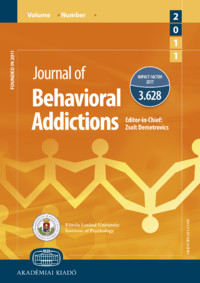An empirical study of affective and cognitive functions in Compulsive Sexual Behavior Disorder
An empirical study of affective and cognitive functions in Compulsive Sexual Behavior Disorder
Author(s): Małgorzata Draps, Guillaume Sescousse, Mateusz Wilk, Katarzyna Obarska, Izabela Szumska, Weronika ŻukrowskaSubject(s): Behaviorism
Published by: Akadémiai Kiadó
Keywords: Compulsive Sexual Behavior Disorder; hypersexuality; cognitive processes; affective processes; behavioral addictions
Summary/Abstract: Background and aims: Despite the inclusion of the Compulsive Sexual Behavior Disorder (CSBD) in the International Classification of Diseases, very little is known about the underlying affective and cognitive processes. To fill this gap, we compared CSBD subjects and Healthy-Controls (HC) across negative/ positive valence, cognitive and sensorimotor systems, as proposed by the Research Domain Criteria framework. Methods: 74 heterosexual CSBD and 66 matched HC males were studied with 10 questionnaires and 8 behavioral tasks. Analyses were conducted with frequent and Bayesian statistics. Results: CSBD individuals showed significantly higher (than HC) punishment sensitivity, anxiety, depression, compulsivity, and impulsivity symptoms. Frequentist statistical analysis revealed significant interaction between subject group and condition in Incentive Delay Task, concerning the strength of motivation and hedonic value of erotic rewards. Bayesian analysis produced evidence for the absence of group differences in Facial Discrimination Task, Risk-Ambiguity Task, and Learning Task. Also, Bayesian methods provided evidence for group differences in the Emotional Stroop Task and the Incentive Delay Task. Sexual Discounting Task, Attentional Network Task, and Stop Signal Task produced mixed results. Conclusions: Higher punishment sensitivity and impulsivity among CSBD subjects, along with significant interaction between these groups and erotic vs. non-erotic reward processing is in line with previous findings on negative/positive valence alterations in CSBD patients. This result shows that there are similarities to substance and behavioral addictions. The absence of group differences and mixed results related to cognitive and sensorimotor systems raise concerns to what extent CSBD resembles a wide spectrum of impairments observed in disorders, and demand further research.
Journal: Journal of Behavioral Addictions
- Issue Year: 10/2021
- Issue No: 3
- Page Range: 657-674
- Page Count: 18
- Language: English

